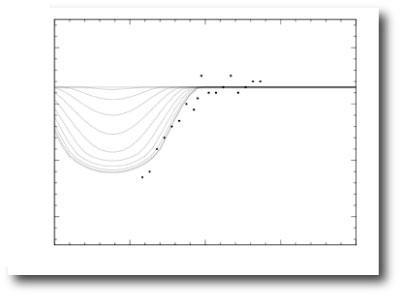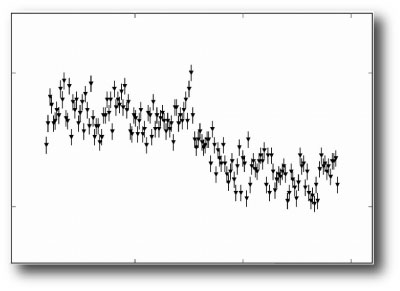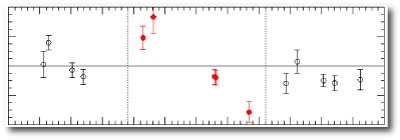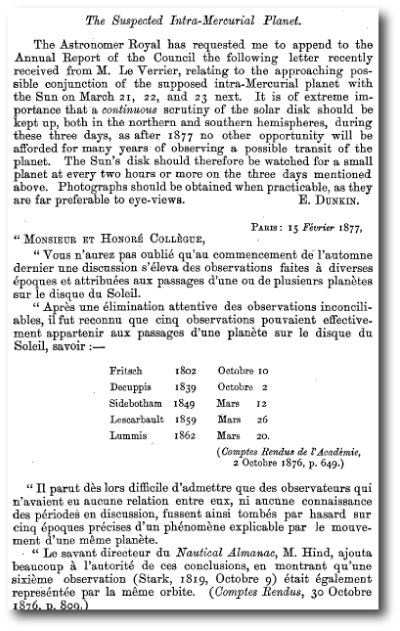
Literally every astronomical worker, amateur and professional alike, who has carried out a serious photometric search for planetary transits is familiar with the symptoms of at least one of the two common strains of transit fever.
In the egressia strain, one observes a photometric time-series in which a transit seems to be ending just as the observations are starting:

The ingressia strain has different symptoms, but is equally infectious. Near the end (or sometimes near the middle of an observing session, it appears from the time-series photometry that a planet is entering transit. In the most common form of the syndrome, the star generally either descends into the murk of high air-mass or is overtaken by dawn before the transit has finished:

A third, somewhat rarer variety of the fever, known as rossiteria, has also been described. This strain is most commonly contracted by theorists; one finds radial velocities in the literature taken during a transit window which seem to show clear evidence of the Rossiter-McLaughlin effect:

I came down with my first serious case of transit fever (later diagnosed as egressia with complications due to rossiteria) nearly four years ago. The symptoms were brought on by HD 217107, the first candidate planet-bearing star observed by the transitsearch.org network. On the night of August 6th, 2002, photometric data was sent by both an observer in Pleasanton California, and from the KAIT automatic telescope at Lick Observatory. The fits to the radial velocity data indicated that the HD 217107 b transit window was scheduled to begin at 2:40 am PDT, and amazingly, both data sets showed a photometric dip right at the predicted time. To seemingly clinch the case, Debra Fisher also used the Lick 3-meter telescope to obtain five radial velocity measurements of HD217107 during and before the predicted transit ingress. When the spectra were analyzed, the velocities came back with a pattern consistent with the expected Rossiter-McLaughlin effect! [The data is available at this webpage]
To say that I was excited was an understatement. It was my first time out. I had no natural resistance. Tim Castellano, Debra, and I all came down with a full-blown case of transit fever. The period of HD 217107b is 7.127 days, which means that successive transits are spaced one week and 3 hours apart. Tim and I were on the verge of flying with a Meade LX-200 to Hawaii to observe the Aug. 13th transit from the parking lot of the Keck Observatory (That plan, fortunately, was canceled by a combination of high ticket prices and Joe Miller, the cooler-headed then-director of UCO/Lick).
By mid-September, observers in the Canary islands obtained a data set which clearly shows that HD 217107b does not transit. Huge disappointment. At that time, HD 209458 b was still the only known transiting extrasolar planet, and so the second detection would have been a very big deal.
With hindsight, having been innoculated against the transit fever, it’s clear that the transit interpretation was ambiguous in all three of our data sets. For example, in the case of the radial velocities from the Lick 3-meter, a new CCD detector for the spectrograph had just been installed, and so the overall zero point of the velocities relative to the predicted radial velocity curve was a free parameter. If the points are all moved down by 10-15 m/s, then the transit feature turns into ordinary scatter in the data. Likewise, with the photometric data, it was clear in retrospect that systematic effects were at work.
The transit detection problem is tough in part because it’s extraordinarily easy for systematic effects to seemingly conspire to produce an apparent signal. I would not feel confident in announcing a transit until I’ve seen multiple full-transit light curves. On the other hand, though, the false alarms play an important role. They get observers out on the sky, and spur the collection of enough data to truly rule out an event. This certainly wound up being the case for GJ 876, HD 168746, and a number of other candidates.
An early case of transit fever was contracted by U. J. J. LeVerrier, the Nineteenth-century French mathematician famous for the dynamical calculations that led to the prediction and subsequent discovery of Neptune. After the Neptune discovery, LeVerrier turned his attention to explaining the precession of Mercury’s perihelion, and found that the effect could be explained by the presence of a small intra-Mercurial planet that he named Vulcan. After a thorough literature search, LeVerrier unearthed five separate observations of the solar-disk transits by this planet, all at times consistent with predictions. In the following 1877 communication to the Monthly Notices of the Royal Astronomical Society, he’s basically saying, how could all those observations (which agree with theory, no less) possibly be wrong?

As everyone now knows, LeVerrier’s Vulcan doesn’t exist. The 43 extra seconds of Mercurian perihelion precession that had bothered LeVerrier so severely are explained by modifications to classical Newtonian gravity by Einstein’s general theory of relativity.

Hi Greg.,
This piece you wrote is great.
I could also think of Bernard kept thinking his Bernard star had a planetary companion, till his death!
Sounds like I am much luckier :-)
Bill
Pingback: systemic - lightcurves
Pingback: systemic - follow-up still in order…
Pingback: systemic - Worlds worlds worlds
Pingback: Chasing Transits : The Last Word On Nothing